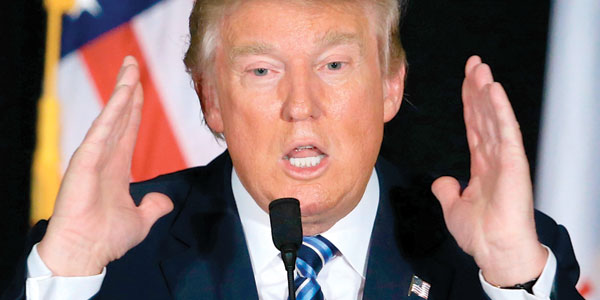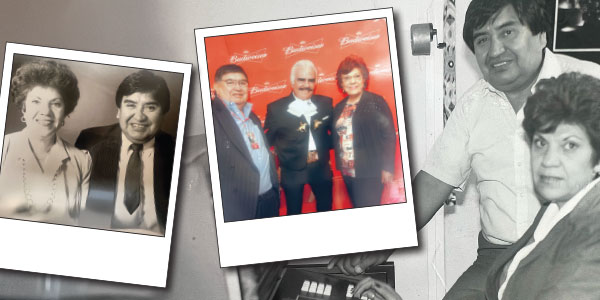
MONTGOMERY, Alabama — Es casi un ritual. A donde voy me preguntan si Donald Trump, de verdad, podría ganar la elección y ser el próximo presidente de Estados Unidos. Sí, por supuesto que puede ganar. Esa ha sido mi respuesta desde que se lanzó como candidato el 16 de junio del año pasado.
Hace unos días dos encuestas seguidas ponían a Trump por delante de Hillary Clinton, la candidata que tiene más delegados en el partido Demócrata. La encuesta de Fox News le daba a Trump una ventaja de tres puntos sobre Clinton (45% a 42%) y la de ABC News dos puntos (46% a 44%). Todo está dentro del margen de error. Pero la contienda, de pronto, está más cerrada que nunca.
Trump le parecía a muchos un hablador, arrogante y egocéntrico. Pero, el error fue no tomarlo en serio. Sus ideas y propuestas, ya hace un año, eran peligrosas y divisivas: Quiere deportar a 11 millones de indocumentados en dos años, construir un muro en la frontera con México y acusó injustamente a inmigrantes mexicanos de ser criminales y violadores; propuso prohibir la entrada a Estados Unidos a 1,600 millones musulmanes en el mundo; desestimó los sacrificios de un héroe de guerra (capturado en Vietnam) como el senador John McCain; y en el primer debate quedó claro que se había referido a mujeres como “perros” y “cerdos gordos” entre otras ofensas. Y hay mucho más.
Este no es el Estados Unidos que yo conozco. Cuando políticos, diplomáticos y periodistas reaccionaron — meses después — ya era muy tarde. Nadie le pudo arrancar la nominación del partido Republicano a la presidencia. Y ahí es donde estamos.
Mientras camino por las calles de Montgomery, me pregunto cómo pasamos de Rosa Parks a Donald Trump. Algo, sin duda, se torció en el experimento estadounidense.
Llego a la esquina de las calles Montgomery y Molton, y me encuentro, de pronto, con el letrero que indica el preciso lugar donde Parks fue detenida por negarse a dar su asiento en el autobús a un pasajero blanco. Ese gesto, individual e histórico a la vez, dio inicio al movimiento de derechos civiles en Estados Unidos un primero de diciembre de 1955.
“De lo único que estaba cansada era de ceder siempre”, diría más tarde Parks, explicando su simbólica decision Ella, desde luego, no era la única en sufrir el racismo en el sur de Estados Unidos. Sin embargo, su valeroso gesto dio lugar a un boicot de 382 días en Montgomery — la primera protesta masiva contra la segregación racial — y a una importantísima decisión de la Corte Suprema de Justicia prohibiendo la discriminación en los autobuses.
“No” es la palabra más poderosa en cualquier lenguaje. Antes de decir “sí” para comenzar un cambio importante es preciso decir “nó” a lo que queremos rechazar. Eso hizo Parks en Alabama. Y así le abrió el camino a muchos después de ella, incluyendo a Barack Obama.
No soy ingenuo. La elección del primer presidente afroamericano en la historia de Estados Unidos en el 2008 no significó que entrábamos a una era post-racial (donde no importaba el color de piel, religión o país de origen). Pero, sí era una clara señal de que Estados Unidos iba en la dirección correcta. Un país que vivió décadas de esclavitud escogía como su líder al hijo de un inmigrante de Kenia.
La historia, sin embargo, nunca es lineal. Lo que no vimos es que, junto a la elección de Obama, se creó una fuerte contracorriente de los grupos más antiinmigrantes, xenofóbicos y extremistas del país.
Las ideas de Trump surgen de los grupos e individuos que rechazan un país cada vez diverso y multiétnico, de colores y acentos distintos. Es irónico que en la elección con la mayor participación de las minorías en la historia de Estados Unidos — el 31% de los votantes, según el centro Pew — ha surgido un candidato que apuesta a ganar con el voto de los hombres blancos.
Hoy el ejemplo de Parks es más importante que nunca. “Alguien tenía que dar el primer paso”, dijo. Y no esperó a que otro hiciera lo que, ella creyó, era su responsabilidad. Por eso en estas elecciones del 2016 me pregunto cuántas Parks rehusarán ceder su asiento y su voto.
(Jorge Ramos, periodista ganador del Emmy, es el principal director de noticias de Univisión Network. Ramos, nacido en México, es autor de nueve libros de grandes ventas, el más reciente de los cuales es “A Country for All: An Immigrant Manifesto”.)
(¿Tiene algún comentario o pregunta para Jorge Ramos? Envíe un correo electrónico a Jorge.Ramos@nytimes.com. Por favor incluya su nombre, ciudad y país.)
______________________________________________________________________________________________________________________
From Rosa Parks to Donald Trump
By Jorge Ramos
MONTGOMERY, Alabama — No matter where I go these days, people ask me the same question: Is it really possible that Republican Donald Trump could become president? My answer has been the same since Trump launched his campaign last June: Yes, it’s possible.
Recently, two national polls even put Trump ahead of Democrat Hillary Clinton. A Fox News survey showed that Trump was ahead by three points (45% to 42%), and one from ABC news put him ahead by two points (46% to 44%). Admittedly, those numbers are within the polls’ margins of error, but suddenly the presidential race has become tighter than ever.
For months, many pundits and politicians dismissed Trump as nothing more than an arrogant, self-centered windbag. But now that his winning the White House is a real possibility, they’re realizing that their big mistake was failing to take him seriously as soon as he started spreading his dangerous rhetoric and divisive ideas a year ago. Among Trump’s most outrageous campaign statements: He wants to deport 11 million undocumented immigrants within two years and build a wall along the Mexican border; he unjustly characterized Mexican immigrants as “criminals” and “rapists”; he called for a ban on Muslims entering the U.S.; he criticized a war hero like Sen. John McCain for being captured in Vietnam; and he admitted to describing women as “dogs” and “fat pigs” during the very first Republican debate last year. There is much more.
However, by the time that politicians and journalists finally began to wake up to the real threat of a President Trump, it was too late. He wasn’t going away, and no other candidate was able to wrest the Republican nomination from him. And here we are today.
As I walked along the streets of Montgomery recently, I wondered how we Americans went from the era of Rosa Parks to the age of Donald Trump. No doubt, the American experiment got twisted at some point.
I visited the corner of Montgomery and Molton streets, the spot where Parks was arrested in 1955 after she refused to give her seat to a white passenger on a city bus. That gesture,
individual and historic, marked the beginning of the civil rights movement in the United States. “The only tired I was,” Parks later recounted, “was tired of giving in.”
Parks’ courage gave rise to a 382-day bus boycott in Montgomery and later led to a momentous decision by the Supreme Court to ban racial discrimination on buses.
“No” is the most powerful word in the world, in any language. Parks’ determination to reject backward ideas in Alabama cleared a path for many people who would come after her, including President Obama.
Now, I’m not naïve. I realize that the 2008 election of the first African-American president didn’t herald a post-racial era in the U.S. However, Obama’s election clearly indicated that the country was heading in the right direction. The fact that a country that supported slavery for so many decades chose as its leader the son of an immigrant from Kenya was truly profound. But history is never linear. Obama’s election also awakened a strong countercurrent of anti-immigrant, xenophobic and extremist groups. And Trump’s rhetoric echoes the ideas of those very groups who are fighting against the reality that America is becoming more diverse and multiethnic.
Furthermore, it’s truly ironic that in the coming election, 31% of expected voters will be minorities, according to data from the Pew Center, yet the presumed Republican candidate hopes to win by appealing largely to the white male voter.
Today, the example that Rosa Parks set is more important than ever. “Somebody had to take the first step,” she said about her actions that day in 1955. She knew that she couldn’t wait for others to do what she knew was her responsibility.
These days I wonder how many people like Rosa Parks will refuse to give up their seats and their votes in November.
(Jorge Ramos, an Emmy Award-winning journalist, is a news anchor on Univision and the host of “America With Jorge Ramos” on Fusion. Originally from Mexico and now based in Florida, Ramos is the author of several best-selling books. His latest is “Take a Stand: Lessons From Rebels.” Email him at jorge.ramos@nytimes.com.)










